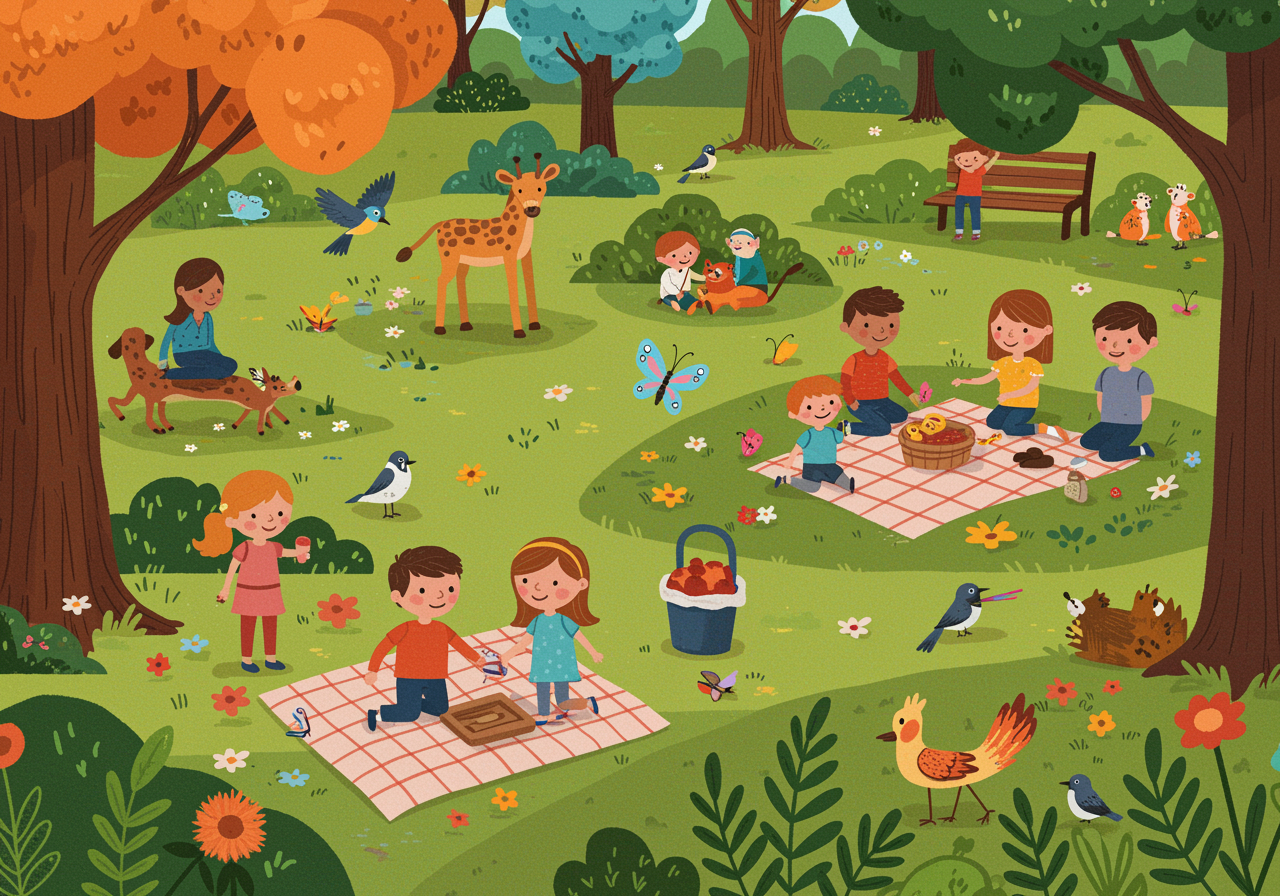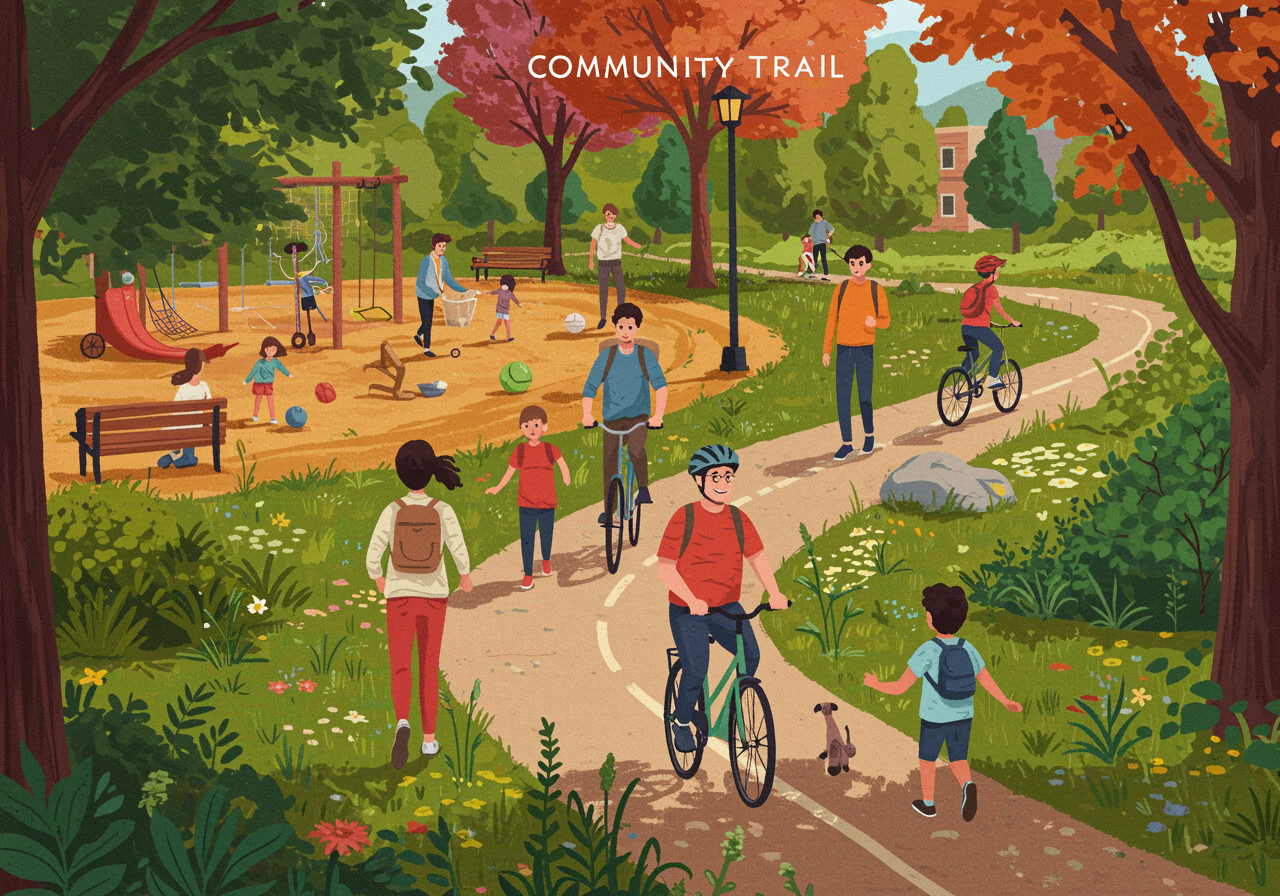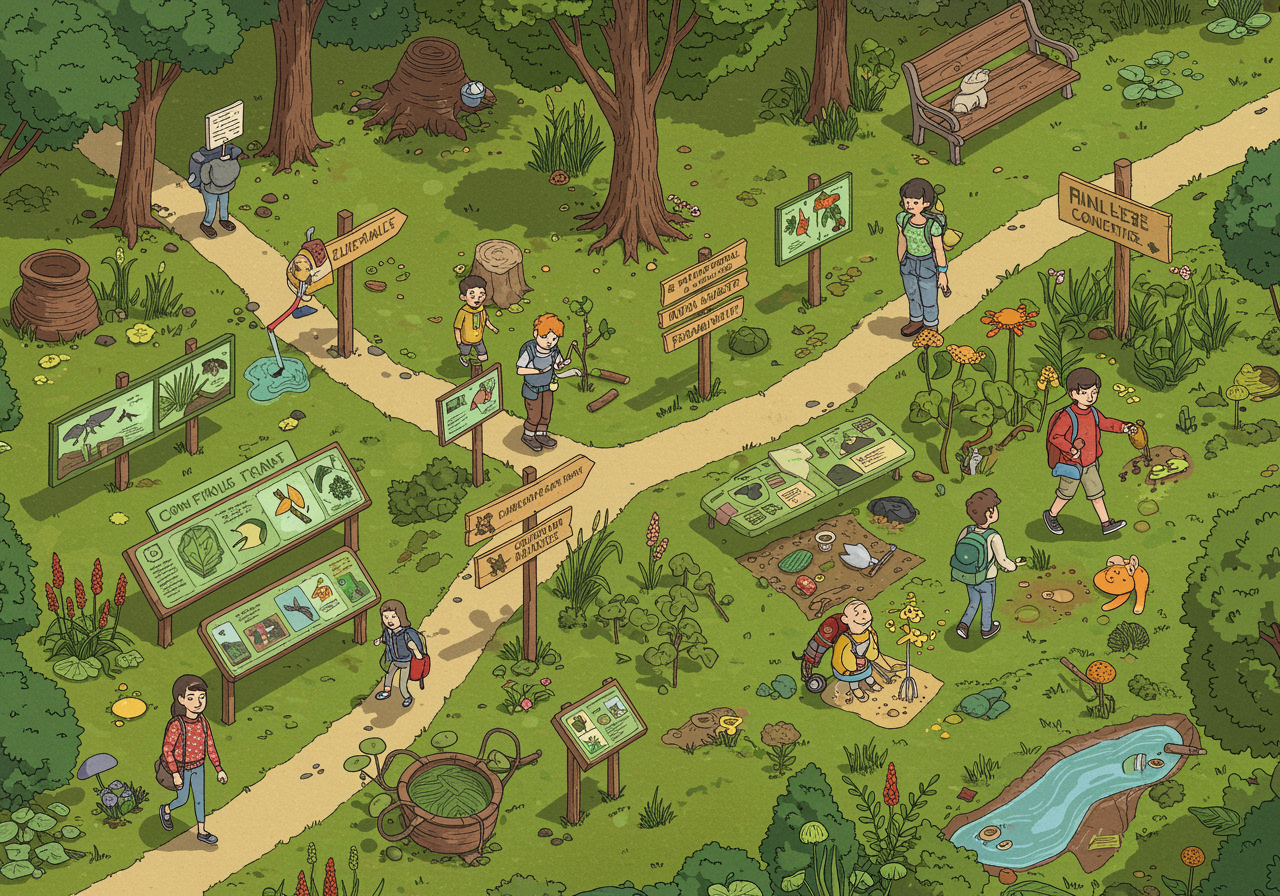Trail Blazers: How Parks and Paths Transform Communities Into Nature’s Best Friends
Discover how a simple walking trail can turn strangers into neighbors and concrete jungles into green havens
Explore the amazing ripple effects that happen when communities build trails and parks, from bringing people together to helping wildlife thrive.
Overview
Think about your favorite outdoor spot – maybe it's a park where you played as a kid or a trail where your family likes to hike. These places didn't just appear magically! When communities decide to build trails and parks, something incredible happens. People start spending more time outside, neighbors meet each other on morning walks, and local wildlife gets safe places to live. It's like creating a bridge between the human world and the natural world, right in your own backyard.

Understand in 30 Seconds
Get up to speed quickly
- Nature Gets a Helping Hand: Trails and parks create safe corridors for animals to travel and find food. Think of them as nature's highways!
- Communities Come Together: Shared outdoor spaces give people reasons to meet, exercise together, and build friendships with their neighbors.
- Health Gets a Boost: Having parks nearby makes it easier for families to be active, reduce stress, and breathe cleaner air.
- Economics Go Green: Parks and trails often increase property values and bring visitors who spend money at local businesses.
Real Life Scenario
Situations you can relate to
Imagine your neighborhood is mostly houses and parking lots, with the nearest nature spot a 30-minute drive away. Then, your city decides to convert an old railroad track into a walking and biking trail with native plants along the sides. Suddenly, you can walk to see butterflies and birds right from your front door! Your neighbor Mrs. Garcia starts walking her dog there every morning, and you bump into classmates riding bikes after school. The local coffee shop puts up a sign advertising 'Trail Mix Smoothies.' What started as an empty strip of land becomes the heart of your community – a place where people exercise, kids learn about plants, and everyone feels more connected to both nature and each other.

Role Play
Spark a conversation with “what if” scenarios
What if you were a city planner deciding where to put a new park?
- Role play: Draw a map of your neighborhood and mark where you'd place the park. Consider who lives nearby, where kids play, and how people would get there safely.
What if you were a bird looking for a new home in the city?
- Role play: Walk around your neighborhood as a 'bird' and identify which areas would provide food, water, shelter, and safe travel routes.
What if you had to convince your town council to build a new trail?
- Role play: Practice giving a 2-minute speech about why your community needs more nature access, using benefits for people, animals, and the environment.
FAQs
Frequently asked questions people want to know
Don't parks and trails cost too much money for cities to build?
While they require upfront investment, parks and trails often pay for themselves by increasing property values, attracting businesses, and reducing healthcare costs as people become more active.
How do trails actually help wildlife when they're full of people?
Well-designed trails create corridors that connect different habitats while keeping foot traffic to designated paths, giving animals safe passage and protecting sensitive areas.
Can small communities make a real difference with just one park or trail?
Absolutely! Even small green spaces can reduce air pollution, provide habitat for local wildlife, and become community gathering spots that strengthen neighborhood bonds.
Examples in the Wild
See how this works day to day
- Atlanta's BeltLine transformed abandoned railway corridors into 22 miles of trails, bringing together 45 diverse neighborhoods and supporting over 30,000 jobs (Atlanta BeltLine Organization)
- New York's High Line park, built on old elevated train tracks, increased property values by 103% within 500 feet and attracts 8 million visitors annually (New York City Economic Development Corporation)
- The 11-mile Burke-Gilman Trail in Seattle connects multiple communities and saves an estimated 3.4 million vehicle miles per year (Seattle Department of Transportation)
- Portland's Forest Park, one of the largest urban forests in the US, provides habitat for over 112 bird species within city limits (Portland Parks & Recreation)
In Summary
What you should know before you start
- Parks and trails create green corridors that help wildlife move safely through urban areas
- Shared outdoor spaces bring neighbors together and build stronger communities
- Access to nature improves physical and mental health for people of all ages
- Well-planned green spaces can boost local economies and property values while protecting the environment
Pro-tip for Parents
You got this!
If your child seems skeptical about the importance of parks and trails, start with their personal interests. Love skateboarding? Talk about skate parks. Into photography? Discuss how trails provide amazing nature photo opportunities. Worried about the environment? Explore how green spaces fight climate change. When kids see how these spaces connect to their own passions, they're more likely to appreciate their broader community value.

Keep an Eye Out For
Find these examples in everyday life
- Local city council meetings discussing new park or trail proposals in your area
- Community groups organizing trail clean-up days or nature restoration projects
- News stories about wildlife sightings in urban parks or along city trails
Explore Beyond
Look up these related research topics
- Urban planning and how cities design spaces for both people and wildlife
- Climate change solutions and how green infrastructure helps communities adapt
- Conservation biology and creating wildlife corridors in developed areas